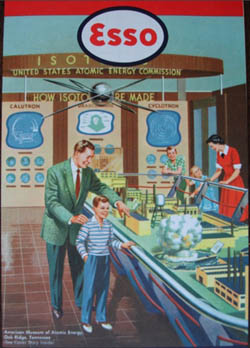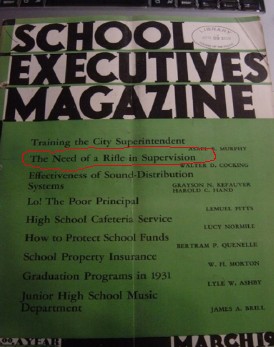I had dinner last night with an elderly and eminent print collector and art historian. He specialises in the eighteenth century – the period when the quantity of text being produced last exploded by an order of magnitude – and embodies many of the assumptions of that period. The printed word is always meaningful; all printed matter is precious; even the minutiae of history are worth preserving.
So when not writing authoritative texts on engravings of Stubbs, he collects ephemera. To the uninitiated, that’s postcards, leaflets, adverts – basically anything printed, however trivial it might seem – and delivers great sacks of the stuff to the Bodleian Library at intervals to be sifted and, if deemed important, archived.
I tried to imagine what it would be like attempting to keep up with modern-day ephemera. I asked him: in an era of mass desktop self-publishing, is it even conceivable or possible to try and keep up? How can one collect and archive such stuff? He said they usually only take stuff from periods up to around the ’50s or ’60s as a rule. But somewhat to my surprise, he insisted that ephemera was more important today than ever, precisely because of computers: “Sooner or later anything on a computer gets erased. If we don’t collect some print how will anyone know what happened?”.
I’m not sure that delivering sacks of home-printed yoga adverts and party invitations to the Bodleian Library is the answer. But it did make me pause. While pamphlets, books and other ephemera give us some clue as to what life was like three centuries ago, what provisions are we making for our own mass memory? Will this neophiliac digital culture be stored on the future equivalent of floppy drives, only to end up becoming just as swiftly obsolete and unreadable? Answers on a postcard.
Category Archives: ephemera
what’s important to save
Rick Prelinger and Megan Shaw visited for lunch earlier in the week and gave us a preview of the very interesting presentation they made later that day about the SF-based Prelinger Library . Beginning in the 70s Rick started collecting film and video that no one else seemed to want — industrials (e.g. GM’s worldfair and auto show films), educational films (think “how to be popular”, “how to be a good citizen” and how to make the perfect jelly), and filmed advertisements to be shown in movie theaters and early TV. Rick’s contention, as the first serious media archaeologist, was that these films that no one intended to be saved or seen again — ephemeral films — often provided much more insight about howsociety has evolved in the twentieth century than the big budget hollywood films which tend to be more self-conscious and indirect.
Below are a few clips from some of my favorites. the clip from “A Date With Your Family” contains one of the scariest moments i’ve ever encountered in film, when at the end of the clip, the narrator remarks as “father” returns from his day at the office . . . . that “these boys greet their dad AS THOUGH they are genuinely glad to see him, AS THOUGH they had really missed being away from him during the day . . . ” In the second clip, “A Young Man’s Fancy,” the daughter in a pensive mood says “I was just thinking” and the mother says incredulously, “thinking?” as if that’s the most outlandish thing she can imagine her daughter doing.
A few years ago, the Library of Congress, recognizing the inestimable value of Rick’s collection, bought the whole kit and caboodle. Since then, Rick and his partner, Megan Shaw have turned their attention to print, building a library of unusual books, periodicals and print ephemera; e.g. an invaluable collection of ESSO’s state maps from the fities that favors serendipitous browsing and remix. (the cover of the ESSO map below depicts a young boy being introduced by his dad to the wonders of nuclear fusion).
The following is from the description on the library’s website:
Though libraries live on (and are among the least-corrupted democratic institutions), the freedom to browse serendipitously is becoming rarer. Now that many research libraries are economizing on space and converting print collections to microfilm and digital formats, it’s becoming harder to wander and let the shelves themselves suggest new directions and ideas. Key academic and research libraries are often closed to unaffiliated users, and many keep the bulk of their collections in closed stacks, inhibiting the rewarding pleasures of browsing. Despite its virtues, query-based online cataloging often prevents unanticipated yet productive results from turning up on the user’s screen. And finally, much of the material in our collection is difficult to find in most libraries readily accessible to the general public.


While listening to Rick and Megan’s talk i had a minor AHA moment. a lot of our skepticism and concern about Google centers on the inherent dangers of a private company being entrusted with the care and feeding of our increasingly digitize culture. When Rick and Megan showed the cover of School Executives, a journal from the 40s, which featured an article on the value of teachers toting guns to enforce classroom discipline, i realized that Google’s digitization efforts focus entirely on codex books (maybe to be extended to periodicals that libraries have bothered to store). but the invaluable materials that might be called “print-based” ephemera — pamphlets, marketing materials, off-beat journals, zines etc. — will be absent in the future. The sad thing about this, as we know from Rick’s ephemeral film collection, is that often these pieces that were never meant to survive tell us more about how our culture evolved and how we’ve ended up where we are, than many self-conscious efforts conceived with permanence in mind.
